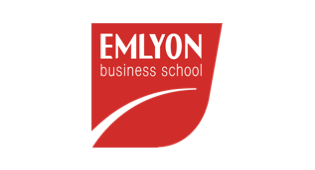11th EIASM Workshop on Family Firm Management Research
Lyon, France – May 29-30, 2015
Family Entrepreneurship and Society
Chairs
Celina Smith
EMLYON Business School, France
Leif Melin and Mattias Nordqvist
CeFEO, Jönköping International Business School, Sweden
Keynote Speakers
Howard Aldrich
Kenan-Flagler Business School, University of North Carolina, USA
Nadine Kammerlander
Family Business Centre for Family Business, University of St. Gallen, Switzerland

CO-organizer
EMLYON Business School, France
Call for papers
Boundaries are a defining feature of organizational life (Santos & Eisenhardt, 2005; Aldrich & Herker, 1977). This is arguably nowhere more evident than in family business research where a constellation of key boundaries have come to distinguish this rapidly expanding field. Scholars have sought for example to discern boundaries between family and non-family businesses (Sirmon & Hitt, 2003; Gallo, Tápies, & Cappuyns, 2004), between family and business (Hollander & Elman, 1988), and notwithstanding the overlap between family, business, and management (e.g. Gersick, Davis, Hampton & Lansberg,1997; Olson, Zuiker, Danes, Stafford, Heck & Duncan, 2003). Boundaries can play an important role in creating and preserving such phenomena as identity or power, and exist in many aspects of family business life from the cognitive, social, and cultural to the economic, geographic, and even political.
Yet, often boundaries are treated as static and immutable rather than as shifting or transitory. Witness the increasingly permeable boundary between entrepreneurship and family business, or between family business enterprises and their external environment through such processes as mergers and alliances, networks, virtual relationships, (Anderson & Jack, 2005), and outsourcing (Memili, Chrisman & Chua, 2011). Boundaries within family businesses themselves are also subject to shifts, for example the rise of daughters in family business succession, an area once considered the male preserve, or finally, the breach between family business and the place they call home.
Therefore, the Shifting boundaries theme considers two main aspects: the nature and relevance of the boundaries (i.e., types or categories) used to define or study family firms, and the changes experienced by family firms that question their traditional boundaries.
In this 11th EIASM Family Firm Research workshop we invite you to engage with the Shifting Boundaries theme – we welcome a broad range of ideas including, but not restricted to:
- What are the relevant boundaries to define and study family firms’ strategic behaviors?
- How do family and family business members negotiate shifts in organizational boundaries?
- How is the geographic boundary between home and work in family businesses changing?
- How are boundary shifts affecting succession processes, regarding both ownership and top management in family businesses?
- How do family business members recognise when they have crossed a boundary (whether functionally, operationally, emotionally or relationally)?
- How do family firms respond to shifts in organizational boundaries?
- How do family and non-family members define and negotiate boundaries for their respective roles in the business?
- How and why do boundaries between roles, functions and structures in family firms shift over time?
- How are new analytical approaches and methodologies, for example the use of audio-visual media, changing the boundaries of traditional family business research?
While submission of papers related to the main theme – Shifting boundaries in family firms - are particularly encouraged, the workshop continues its tradition to accept papers relevant to any area of family firm management and which add value to the development of the family business research field
Read more here.


